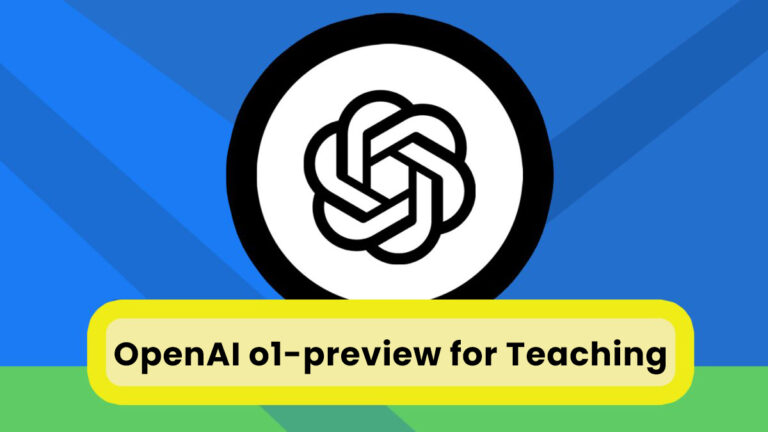Save time and step into the future of education with AI teacher assistants.
AI teacher assistants offer personalized learning, quick feedback, and seamless classroom management. By streamlining writing tasks, these top assistants will make your teaching more efficient and effective.
Here are the top 6 AI teacher assistant tools that teachers can start utilizing:
1. MagicSchool.ai
- Description: MagicSchool.ai is a comprehensive AI teacher assistant platform that offers a wide range of features to support educators in various aspects of teaching. From lesson planning and curriculum development to student assessment and feedback, MagicSchool.ai harnesses the power of AI to optimize classroom workflows and improve learning outcomes.
- Pros: MagicSchool.ai offers customizable lesson templates and curriculum frameworks, allowing teachers to design engaging and interactive learning experiences tailored to their students’ needs. Its advanced analytics tools provide valuable insights into student performance and learning progress, enabling educators to make data-driven instructional decisions.
- Cons: Some users may find MagicSchool.ai’s interface initially overwhelming due to the abundance of features and customization options. Additionally, the platform’s pricing structure may vary depending on the desired features and usage volume, potentially posing budgetary constraints for some educational institutions.
2. ChatGPT Classroom
- Description: ChatGPT Classroom is an AI-powered virtual teaching assistant designed to support educators in various aspects of classroom management, instruction, and student engagement. Leveraging OpenAI’s advanced natural language processing (NLP) capabilities, ChatGPT Classroom can assist teachers in answering questions, facilitating discussions, and providing personalized support to students.
- Pros: ChatGPT Classroom offers a conversational interface that mimics human interactions, enhancing engagement and accessibility for students. Its adaptive learning algorithms can adapt instructional strategies based on student interactions and performance data, providing tailored support and feedback to meet individual learning needs.
- Cons: While ChatGPT Classroom excels in facilitating interactive learning experiences, it may require ongoing monitoring and supervision by educators to ensure the accuracy and appropriateness of responses. Additionally, integrating ChatGPT Classroom into existing learning environments may require technical setup and customization to align with specific curriculum goals and instructional approaches.
3. Eduaide
- Description: Eduaide is an AI-powered teacher assistant platform that focuses on providing personalized learning experiences for students. Through intelligent algorithms, Eduaide analyzes individual learning styles, preferences, and proficiency levels to recommend tailored learning activities, resources, and assessments.
- Pros: Eduaide’s adaptive learning technology ensures that each student receives personalized support and guidance, fostering a more inclusive and effective learning environment. Its intuitive interface and user-friendly design make it easy for both teachers and students to navigate and utilize its features.
- Cons: While Eduaide excels in personalizing learning experiences, some users may find its assessment and feedback capabilities less comprehensive compared to other platforms. Additionally, integration with existing learning management systems (LMS) and educational tools may require additional setup and configuration.
4. TeachMateAi
- Description: TeachMateAi is a versatile AI teacher assistant platform that offers a range of tools and resources to support educators in lesson planning, content creation, student engagement, and assessment. With its natural language processing (NLP) capabilities, TeachMateAi can generate interactive quizzes, facilitate classroom discussions, and provide instant feedback to students.
- Pros: TeachMateAi’s conversational interface enables teachers to interact with the platform using natural language commands, enhancing ease of use and accessibility. Its adaptive learning algorithms continuously adapt and optimize instructional strategies based on student performance data, ensuring personalized support for every learner.
- Cons: While TeachMateAi offers a wide range of features, some users may require training and familiarization to maximize its effectiveness in the classroom. Additionally, the platform’s pricing structure and subscription plans may vary depending on the desired features and level of customization.
5. BrainyTeach
- Description: BrainyTeach is an AI-powered teacher assistant platform that focuses on facilitating collaboration and communication among educators, students, and parents. It offers features such as virtual classrooms, discussion forums, and messaging tools to foster engagement and connectivity in the learning community.
- Pros: BrainyTeach’s virtual classroom features enable teachers to conduct live lectures, interactive presentations, and group activities in a digital environment, enhancing flexibility and accessibility for both in-person and remote learning scenarios. Its communication tools facilitate seamless interaction and information sharing among teachers, students, and parents, promoting transparency and collaboration.
- Cons: Some users may find BrainyTeach’s interface and navigation structure less intuitive compared to other platforms, requiring additional training and support. Additionally, the platform’s effectiveness may depend on the availability and reliability of internet connectivity, which could pose challenges in certain educational settings.
6. EduBot
- Description: EduBot is an AI-powered chatbot designed to assist teachers in answering common questions, providing resources, and offering personalized support to students. Through natural language processing (NLP) technology, EduBot can understand and respond to inquiries in real-time, freeing up teachers’ time for more personalized interactions with students.
- Pros: EduBot’s chat-based interface makes it easily accessible to students anytime, anywhere, fostering a culture of continuous learning and support outside of the classroom. Its knowledge base can be customized and expanded over time to address specific curriculum topics, learning objectives, and frequently asked questions.
- Cons: While EduBot excels in providing instant support and information retrieval, it may not fully replace the expertise and guidance of human teachers in more complex or nuanced educational contexts. Additionally, ensuring the accuracy and reliability of EduBot’s responses may require ongoing monitoring and maintenance by educators.
In conclusion, AI teacher assistant platforms offer valuable resources and support for educators seeking to enhance teaching effectiveness, personalize learning experiences, and foster engagement in the classroom.
Each platform has its strengths and limitations, so educators should carefully evaluate their specific needs and educational goals when selecting the most suitable tool for their teaching practice.
Stay tuned for our upcoming posts, where we’ll dive deeper into these topics and more. In the meantime, feel free to explore our archives and start your free AI education journey today. Thanks for joining us, and happy teaching!




